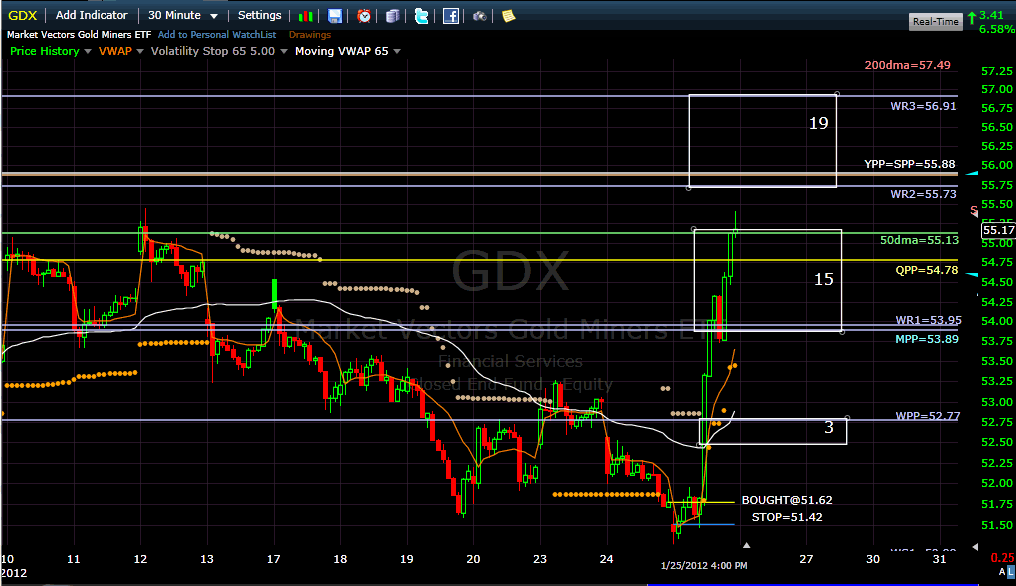“All you need to know is the Fed wants to inflate prices of everything including stocks. Putting in place a “permanent” policy of low interest rates over the next several years will lead to a weak dollar and more inflation. That’s it. This generally means that market strategists and technicians need to yield to what the Fed is doing.” Dave Fry. ETF Digest.com
Now, the problem is how can we let the IWM robot know about yielding to what the Fed is doing? And how could it precisely time and quantify it? This is of course an exogenous “subjective” element that could never have been included in the robot’s design and settings. At best, subjective influences like these, if we adhere to them, mean that we should reduce arbitrarily our position sizes for short trades. And that’s what I “subjectively” recommend indeed.
There were frantic exchanges of emails this morning between Pascal and I when we saw that after being stopped out yesterday at 79.23, the IWM robot was again looking for a short entry at a limit of 79.85. We are not stupid and know that this uptrend is very powerful and dangerous for short-selling. The main problem with a neutral 20 DMF signal and a TEV that remains extremely extended is that the robot’s LT/ST settings will always look for shorting no matter how long the price uptrend continues. There is no fail-safe parachute.
We were ready to introduce a new fail-safe trigger, but only after clear evidence from backtested statistical studies. And Pascal’s research is pointing to a favorable outcome if shorting into strength today or tomorrow.
He found 28 cases with a MF > 0.83 for 12 days in a row with an IWM price advance over + 3.5%. The question is: under such conditions, did the ETF keep up-trending or did it pullback?
On average, a higher close today is marking a top for the next 10 days with an average return of -2.61% within the next 10 days. A lower close today sees negative returns over the next 9 days with an average return of -0.96% after 10 days. If we have a higher close on Friday, the expected return would be – 1.00% within 10 days. If we have a lower close on Friday, then the expected return would be -2.5% within 10 days.
Shorting into strength today or tomorrow has always been the correct decision in the past. Hence, no new fail-safe rule is justified and the robot will enter a short trade at its official limit of 79.85. The initial stop at 81.43 is above the strong cluster of Monthly R3 (80.71), Quarterly R1 (80.45) and Weekly R2 (80.01). Quarterly floor levels have marked many turning points in the history of the robot, so QR1 will be a key potential top to watch.
GDX had its best day of the year and the GDX robot will sell its position if the GDX money flow closes back down below 1.35% as per the new improved rules. It currently sits at 1.86%.
The stop can be trailed higher at 51.42, but with the new rule such a worst-case secenario is now extremely remote.
Billy





 Reply With Quote
Reply With Quote

